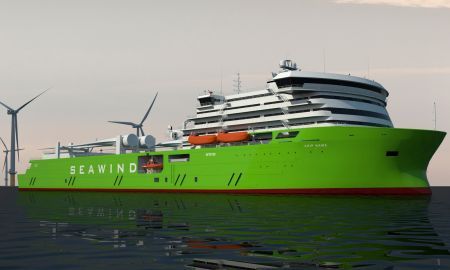
A research by the University of Delaware's College of Earth, Ocean and Environment (CEOE) has revealed that altering shipping routes in the US to open up areas for offshore wind development could save billions of dollars in construction and operating costs.
The cost to the shipping industry is relatively less for sending commercial ships slightly farther out to sea when traveling between Mid-Atlantic ports, said CEOE.
CEOE professor of marine policy and study co-author Jeremy Firestone said, "It's a big ocean, but there are a lot of users that need to work with each other to maximise benefits to society."
Offshore wind projects are being considered in the US with aims of enhancing air quality, increasing energy security and supporting domestic manufacturing.
The CEOE research team considered several hypothetical, large-scale offshore wind projects that could be built in the Mid-Atlantic region.
Taking the present shipping data as a base, researchers considered deep-draft vessels make approximately 1,500 trips between New Jersey, New York, Delaware Bay and Chesapeake Bay ports annually.
Researchers calculated the added cost of having ships travel farther by considering capital, fuel and operating costs and cost to society of emissions of CO2, NOx, SOx and particulate matter emitted during ships' voyages. The cost of offshore wind projects included capital costs of foundations, transmission cables and installation, and the cost of maintaining the turbines, CEOE said.
Rerouting the ships farther out from shore added $200m (€145m) to the cost of their voyages over the course of three decades. This would raise the direct cost of transporting a metric ton of goods by 25 cents.
Constructing the wind turbines farther out beyond the shipping routes have added a fee of $13.4bn (€9.7bn) to the cost of projects.
Overall, the savings from changing the routes would add up to $13.2bn (€9.6bn).
The researchers said, "If the US is to advance towards meeting its goal to build 54GW (gigawatts) of offshore wind capacity by 2030, finding cost-effective locations for these wind projects is critical.
"By modifying vessel routes, shallow, nearshore sites in the US Mid-Atlantic could be opened for wind development, allowing consumers to have the benefit of clean, domestic, carbon-free wind energy at a cheaper price."
The research study was focused on the economic costs and benefits, but other factors, like safety measures to avoid ship collisions, are still needed to be considered.
We use cookies to improve your experience. By continuing to use our site, you accept our Cookies, Privacy Policy,Terms and Conditions. Close X